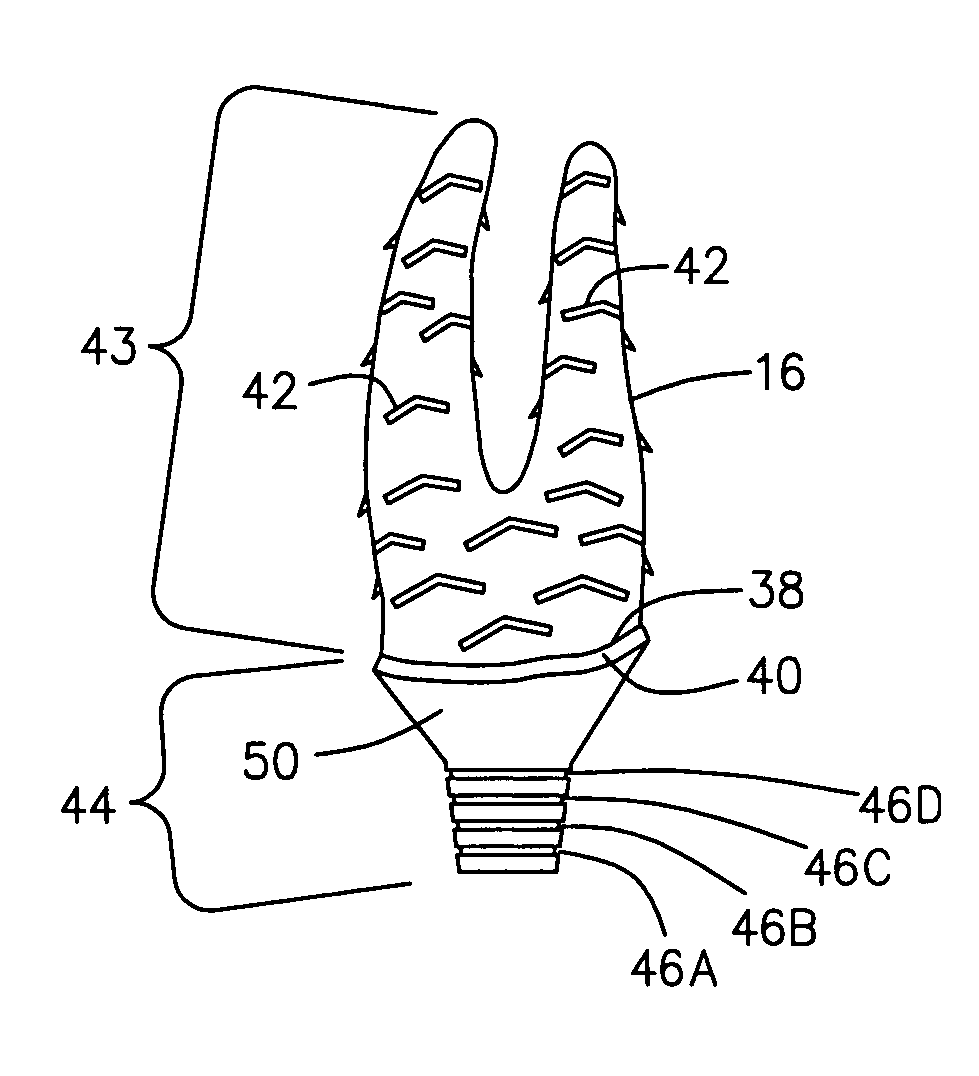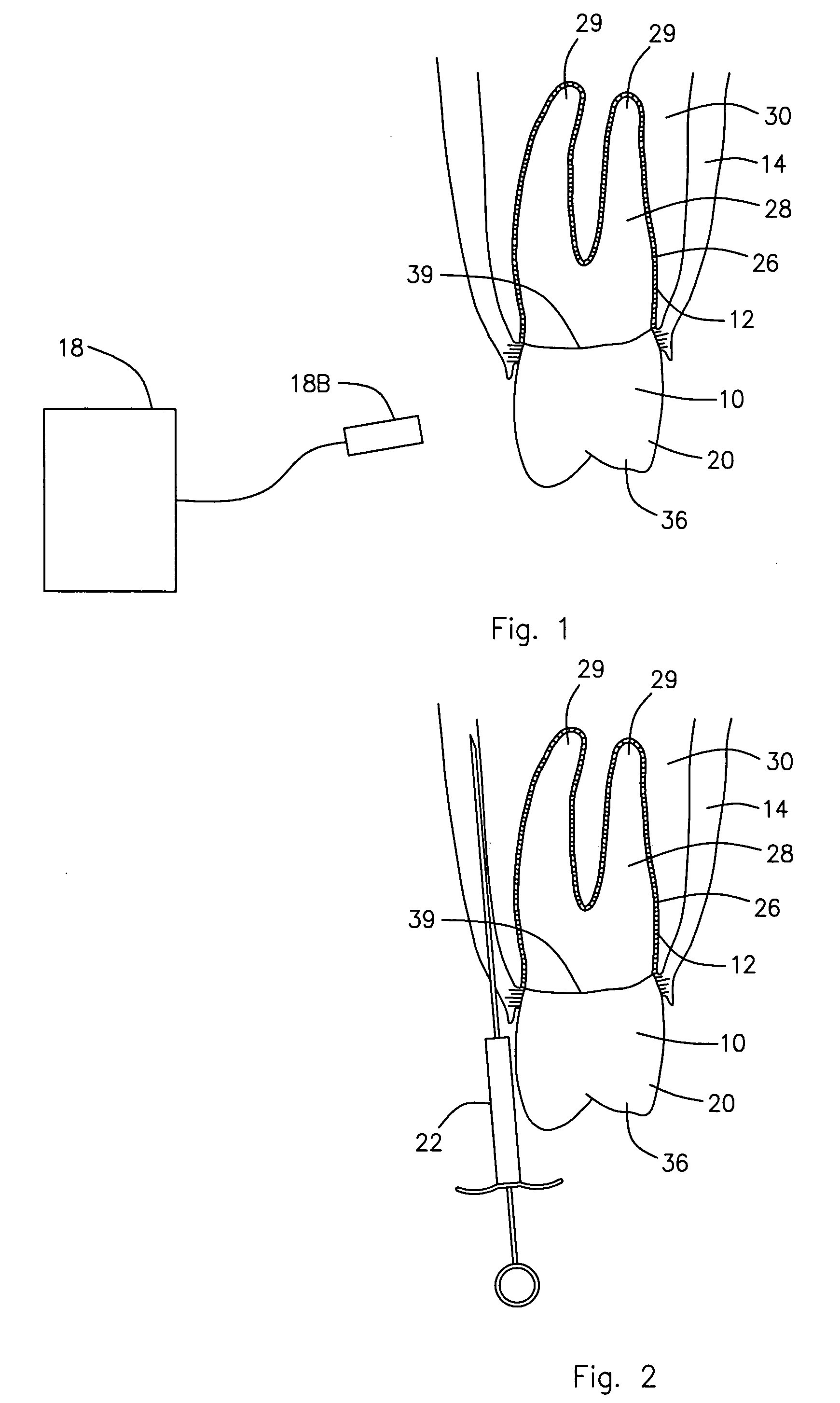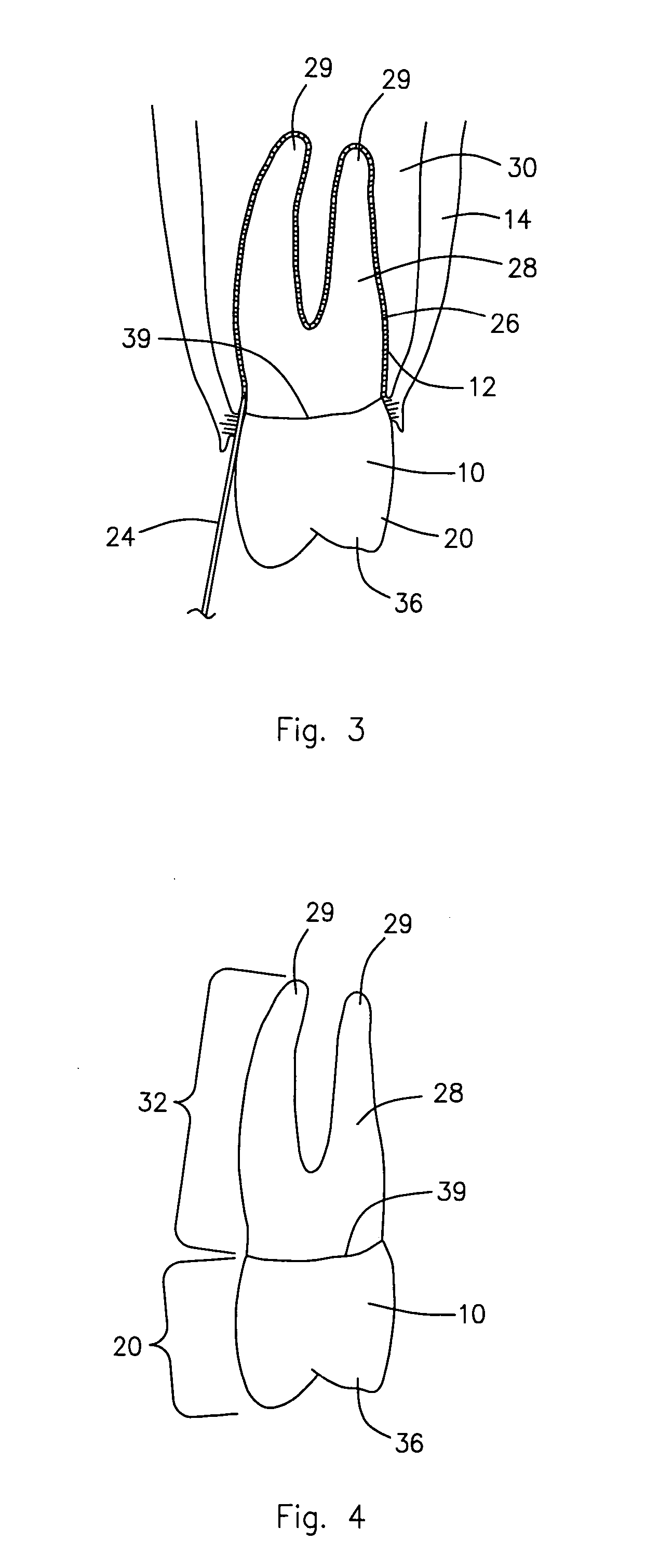Dental implant and method for making and installing same
a dental implant and implant technology, applied in dental prosthesis, dental surgery, medical science, etc., can solve the problem of more healing time and other problems, and achieve the effect of promoting bone growth and reducing micro-movement of implants
- Summary
- Abstract
- Description
- Claims
- Application Information
AI Technical Summary
Benefits of technology
Problems solved by technology
Method used
Image
Examples
Embodiment Construction
The Invention
[0061] Referring now to the drawings and initially to FIG. 1, there is shown a tooth 10 that is about to be extracted from a tooth socket 12 in a patient's mouth 14 and, as shown in FIG. 10, replaced with an implant 16 according to a preferred embodiment of the present invention. The present invention is a dental implant 16 and method for making and installing that dental implant 16 into a patient's mouth 14.
[0062] This invention normally involves replacement of a tooth 10 with an implant 16 immediately after the tooth 10 is extracted. The process employs prior technology such as the CEREC CAD / CAM equipment that is illustrated in FIGS. 1, 5, and 6A. This CAD / CAM equipment 18 provides the ability to acquire three dimensional images of the tooth 10 via a camera 18B that is part of the equipment 18 and the capability to machine a titanium implant 16. However, this invention can also be employed to replace a tooth or teeth that have been extracted much earlier, or alterna...
PUM
 Login to View More
Login to View More Abstract
Description
Claims
Application Information
 Login to View More
Login to View More - R&D
- Intellectual Property
- Life Sciences
- Materials
- Tech Scout
- Unparalleled Data Quality
- Higher Quality Content
- 60% Fewer Hallucinations
Browse by: Latest US Patents, China's latest patents, Technical Efficacy Thesaurus, Application Domain, Technology Topic, Popular Technical Reports.
© 2025 PatSnap. All rights reserved.Legal|Privacy policy|Modern Slavery Act Transparency Statement|Sitemap|About US| Contact US: help@patsnap.com



